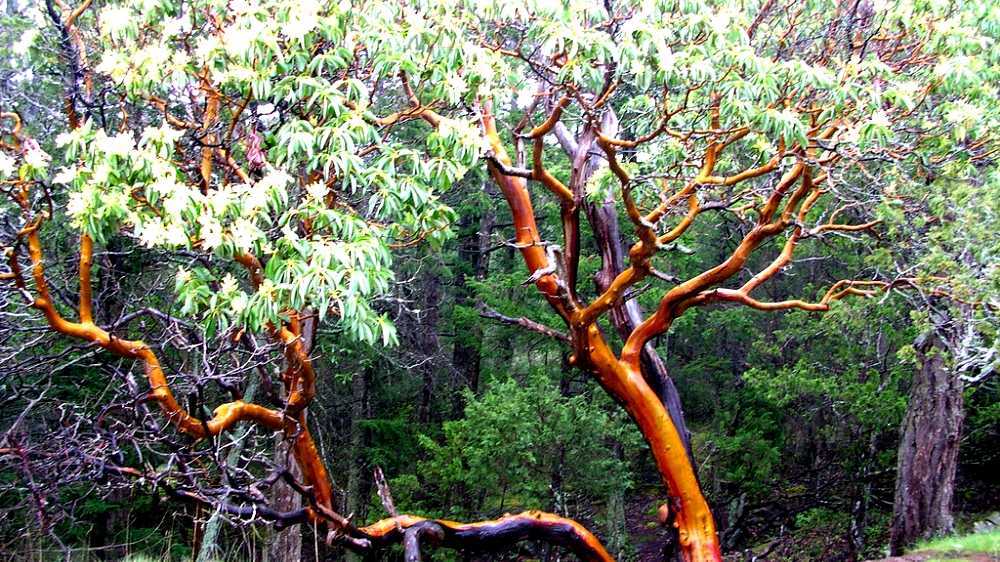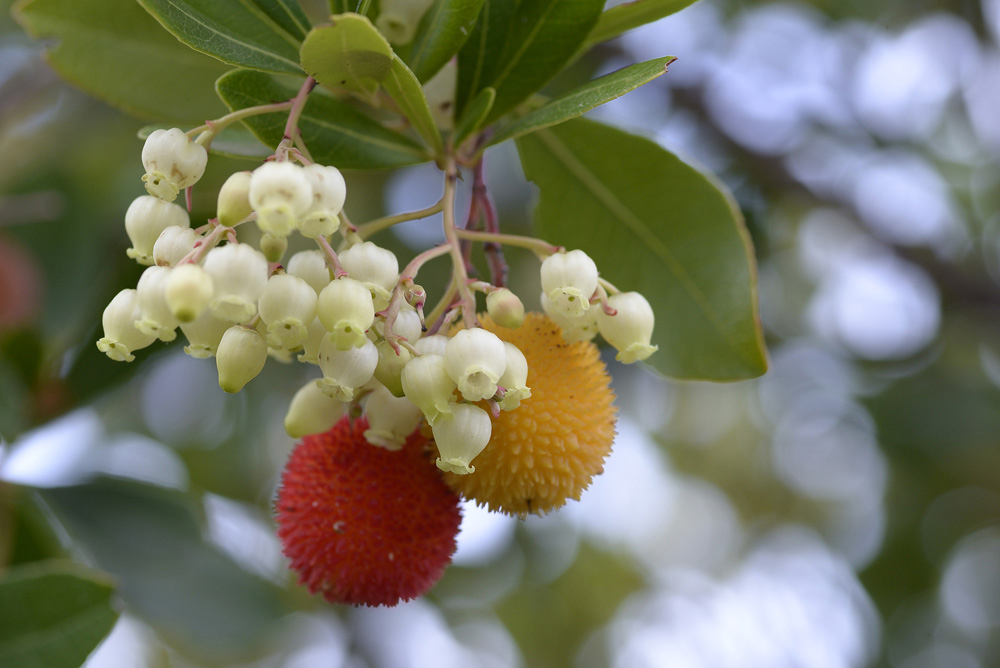This month’s featured native: Pacific madrone (Arbutus menziesii)
Pacific madrone is a distinctive tree species in the heather family (Ericaceae), reaching up to 25 m (80 ft) in height. It is the sole native broadleaf evergreen tree in our region, which makes it stand out among our local flora; its thin, reddish-orange bark peels back in patches as it ages to reveal bright-green new bark underneath, adding to its unique appearance. Water present in this smooth bark makes it feel cool to the touch, giving rise to the nickname “refrigerator tree.” As madrones mature, the bark at their base becomes a dull brown-grey, and more furrowed; madrones may live up to 300 years. Madrone’s waxy, deep-green leaves measure up to 15 cm (6 in) long and about half as wide. Some may take on a reddish cast, while some may turn black due to fungal infestation; these will eventually be cast off. The numerous white to pink flowers are small, with the classic ericaceous inverted-urn shape; when pollinated, they produce bright-red, bumpy fruits. These are edible to humans, but unpleasantly astringent due to high tannin content.
Madrones spread naturally through seed production; fire often produces flushes of new madrone seedlings, and–while the thin bark is susceptible to burning–mature madrones typically survive and re-sprout quickly. Cut stumps will also re-sprout. Madrones are notoriously finicky about transplanting, and are prone to a great many diseases. They prefer rocky, well-drained soil, and full sun at maturity (though young saplings prefer part shade). They will not tolerate high soil moisture. Madrone’s native range spans from the Coast Range to the west slope of the Cascades, and from modern-day British Columbia to California.
Pacific madrone is a vital habitat tree: it is used for nesting by a wide array of bird species (especially cavity-nesters, as the species is prone to heart rot), and its fruits–which persist into winter–provide food for a variety of birds and mammals.


